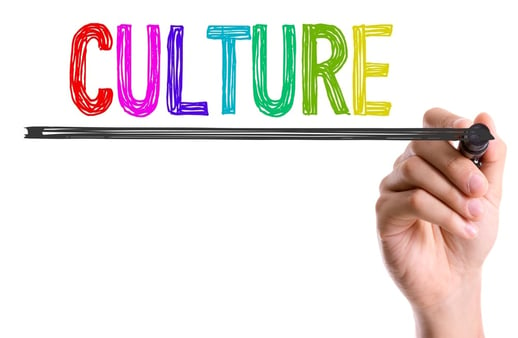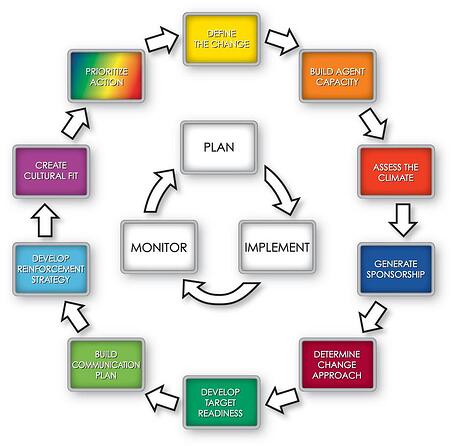Remember what happened when you first joined your organization? You were probably given a handbook with all the formal policies and procedures. Did you find it helpful? Sure. But we are guessing after just a few days of working there, the "unwritten rules" that dictate how your organization really operates began to surface. 
For example, is it ok to send an email to anyone you think is appropriate, or do you need to clear it with someone first? Are there specific people you can count on to really navigate the waters of the organization? Is your organization "politically charged" with a culture of turf-guarding? You won't find any of this written in a handbook, but rest assured, these unrecorded rules are there.
Corporate Culture
Your corporate culture is the collective pattern of behaviors, values, and "unwritten rules" that every organization develops over time.
- Behaviors- how we operate
- Values- guidelines for the decisions we make
- Unwritten rules- “the way we do things around here”
In other words, your culture is the underpinning of what really goes on in your organization-- the dynamics, the politics, and the sub-text. It's what occurs below the water line. While you may not talk about the culture, or see the culture, it's there and operating.
The good news is your organization’s culture is arguably your greatest source of competitive advantage! Strategy, products, marketing, finance, and technology can all be replicated over time by your competition. But no other organization can match what makes your organization "you."
Culture Change
This is why many people want to bury their heads in the sand when you start to talk about culture change. They know that changing your organizational culture is not a small, easy task. But in today’s business world, enterprise-wide changes such as Shared Services, ERP Implementations, Business Transformation, and Lean/Six Sigma are everywhere. And when you are talking about these types of transformational change, you are inevitably talking about culture change.
When you are dealing with a change that has cultural implications you are ultimately left with two very difficult options:
- You can “change the change” so that you strip it of anything that doesn’t fit culturally
- Or you can change the culture
If culture change is the path you choose, a series of workshops that describe the new culture, or communications from the top about what you want the new culture to be are just not going to cut it. The only way to implement actual culture change is to integrate the behavioral elements of the new culture into the daily business activities, and then, by dramatically changing the reinforcements—that is, the positive and negative consequences that managers apply on a daily basis with their direct reports.
Applying a Structured Process to Change Culture
Structure is what helps you mitigate risk, quickly identify sources of resistance, and ensure that the human elements are all being managed in a disciplined way. Since culture change is not a simplistic process, using a structured change management methodology such as IMA’s proprietary Accelerating Implementation Management (AIM) will help ensure ROI on your project.
 Here are just 3 of the many tips AIM offers when dealing with culture change:
Here are just 3 of the many tips AIM offers when dealing with culture change:
- Identify the behaviors “you seek to see” as you move to the new culture.
Remember that culture change can’t be accomplished through a list of corporate-speak platitudes— the new behaviors must be identified for each group that is impacted by the culture change. - Identify how these new behaviors will get translated into daily business activities for the impacted group.
If you are trying to inculcate a new culture it can’t be done as a general “cultural ethos” across the enterprise by simply communicating from the top of the organization. - Recognize and secure Sponsorship at every level of the organization, and be prepared for resistance from mid-to-upper level managers.
Unless you have active Sponsors who are expressing, modeling and reinforcing the desired behaviors for the new culture, you won’t achieve the future state. Remember that everyone is a Target first—and you can expect the most resistance from those with the highest vested interest in things remaining the same.
When your business change involves culture change, your implementation approach must address the predictable barriers to enterprise-wide execution, it must be scalable and replicable, it must be practical and customizable, and it must be systemic. If it does not meet this criteria it cannot address the complexity inherent in multiple, cross-functional change nor achieve on time, on budget, to specification project results!


